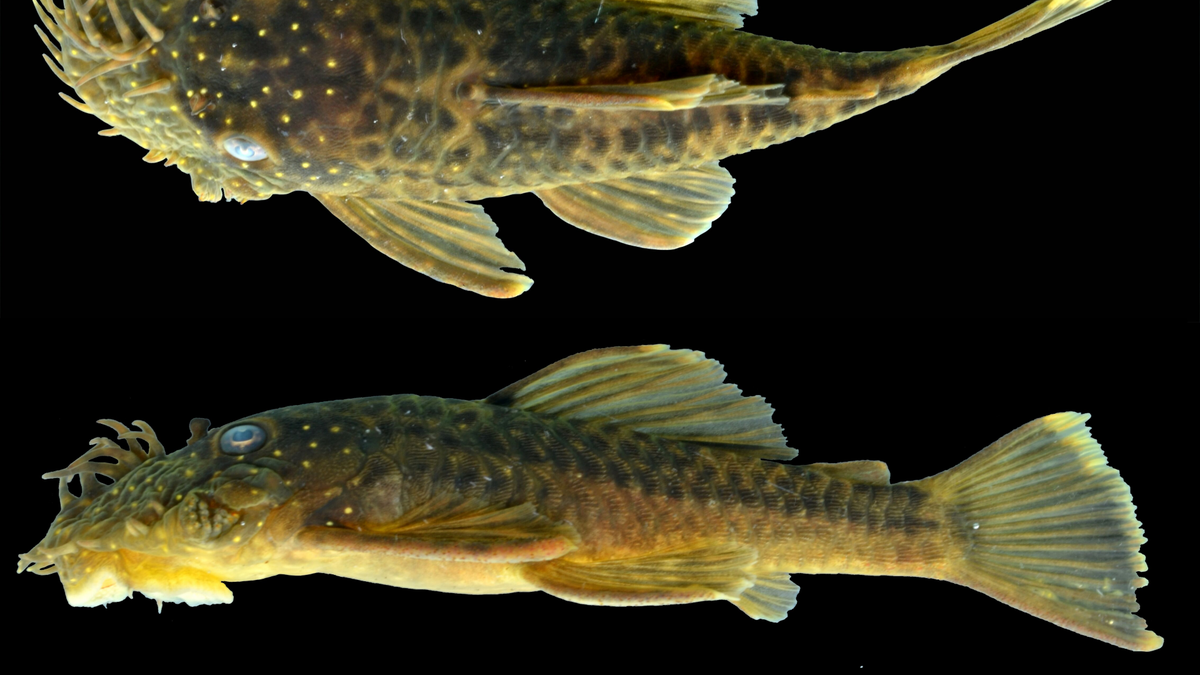
<em> Ancistrus kellerae </em>, is one of six new species of bristlenose catfish discovered in the Amazon. (Jonathan Armbruster)
With tentacle-covered snouts, claw-like spines that protrude from their heads and bodies covered in armor, these newfound catfish look more mythical than real.
Scientists just discovered six species of these creepy-cute fish, called bristlenose catfish (in the genus Ancistrus), in rivers of the Amazon, the researchers reported in the journal Zootaxa Wednesday (Feb. 12). [In Photos: The World's Largest Bony Fish]
"They're warriors, they're fish superheroes," lead author Lesley de Souza, a conservation scientist and ichthyologist at Chicago's Field Museum, said in a statement.
The tentacles are actually present only in males, and they function as a sort of "pick me, I'd be a good father" sign. Males also guard the nests and make sure predators don't snatch their babies.
More From LiveScience
"The idea is that when a female fish sees a male with these tentacles, to her, they look like eggs," de Souza said in the statement. "That signifies to her that he's a good father who's able to produce offspring and protect them." One of the newfound species, in fact, is named Ancistrus patronus, meaning "protector," in recognition of the care the males provide their offspring.
De Souza and her team discovered the catfish in northeastern South America in parts of Venezuela, Colombia and Guyana, which make up a geographic region called the Guiana Shield, according to the statement. But like many other species the world over, the catfish face some threats to their survival.
The creatures are very sensitive to even tiny changes in their environment. So, in some of the clear-water rivers and streams where they were once plentiful, they are now scarce, according to the statement. Threats to their health and numbers include large-scale agriculture, deforestation and gold mining — the latter can both change the fishes' habitat and poison them with mercury.
The demise or reduction in population of one species, of course, can affect others. Giant river otters, for example, eat these fish all the time, according to the statement. "All the layers of the Amazon basin are interconnected, from the rivers to the forest canopy," de Souza said. "Everything begins with naming a species and determining how many species you have. Once you have done the taxonomy, then you can study the ecology [and] behavior and do conservation action."
Some of the other newfound species include A. yutajae, named for a pair of star-crossed lovers in an Amazonian legend; A. Saudades, meaning melancholy in Portuguese; and A. leoni, named after a deceased colleague of the researchers.
- Photos: The Freakiest-Looking Fish
- 11 Animals Named After US Presidents
- Photos: Incredible New Species Discovered in 2016
Originally published on Live Science.
